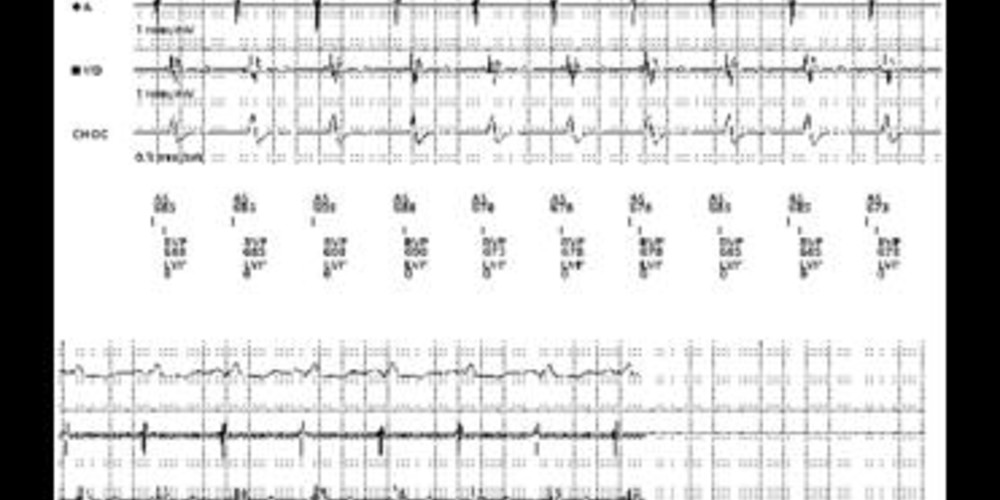Rise in left ventricular capture threshold
Tracing
Manufacturer Boston Scientific
Device CRT
Field Left ventricular pacing
N° 5
Patient
This 67-year-old man suffering from dilated cardiomyopathy with left bundle branch block received a Boston Scientific Cognis triple chamber defibrillator. At 6 months after the implant, the patient had not responded to therapy and continued to suffer from dyspnea during routine daily activities. Interrogation of the defibrillator revealed 100% BiV stimulation.

Graph and trace
Tracings recorded in the ambulatory department.
- spontaneous atrial rhythm and BiV stimulation
Tracing recorded without changing the programming; pulse amplitude for LV stimulation = 2.5 V/0.4 ms.
- same QRS morphology as on previous tracing
- different QRS morphology; alternans between both morphologies.
LV stimulation threshold measurement = 2.5 V/0.4 ms.
Tracing recorded after reprogramming of LV stimulation pulse strength to 3.5 V/0.4 ms without change in configuration.
- morphology of BiV capture (on the first tracing, morphology consistent with RV capture only).
Other articles that may be of interest to you







This patient’s LV lead threshold rose. The chest radiograph showed no macro-dislodgement. The rise in threshold may have been due to a micro-dislodgement invisible on X-ray or to local changes in the myocardium. This unexpected non-response in a patient with left bundle branch block was, therefore, probably due to a consistent failure of BiV capture despite a BiV stimulation rate near 100%. After the measurement of the bipolar lead threshold at various LV stimulation configurations, we selected the lowest that was not associated with phrenic nerve stimulation.